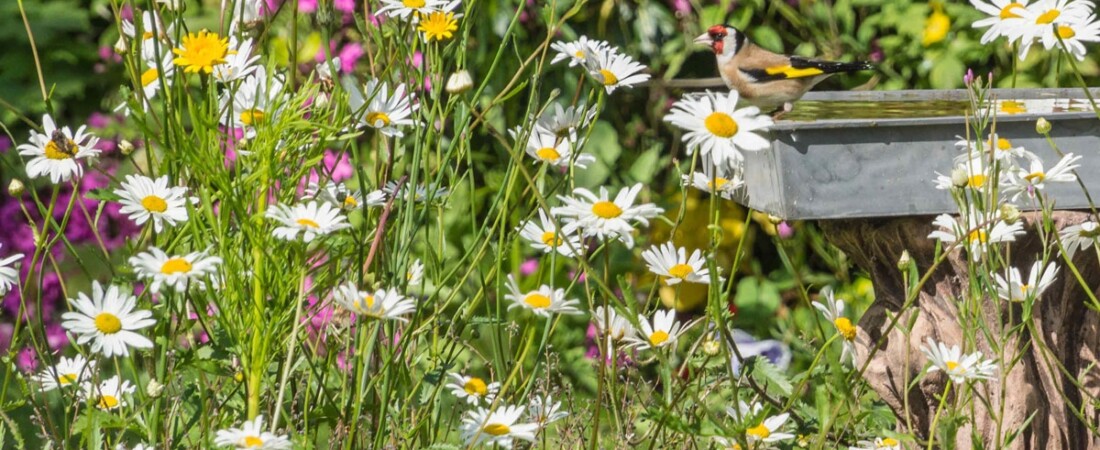On National Garden Wildlife Week, here are a few ways you can encourage wildlife to your outdoor space, and create a haven for insects, birds, hedgehogs and more.
Bird Boxes
Introducing bird boxes, feeders and baths to your garden is a great way of helping birds to thrive. Unfortunately, 43% of birds in the UK are threatened with extinction, and natural nesting sites are becoming increasingly harder for birds to find. But your garden could provide a great alternative. Ensure your bird box is high up, and aim to place your feeder in a sheltered place, with a variety of feed to attract different species. Birds will equally appreciate a source of clean water – whether that be a pond or a small dish.
Composting
Not only is composting both natural and inexpensive, it transforms your waste into valuable and nutrient-rich food for your garden. Enriching your soil, composting provides a habitat for various insects, worms and frogs. As well as this, home-composting is a brilliant way of reducing landfill waste and incineration, saving five times the amount of energy produced by burning waste. If you’re unable to make your own compost, be sure to use peat-free compost, since peat extraction destroys vital habitats.
Flowers
While flowers add a huge amount of vibrancy and scent to your garden, they also provide a source of valuable, nectar-rich food for butterflies and bees. With one of every three mouthfuls of our food depending on pollinators, it’s important to contribute to their transport system across the landscape. Growing a range of plant varieties, including climbers and wildflowers, will ensure colour throughout the seasons, along with providing food for animals and insects with different feeding periods. Meanwhile, plants with seeds and berries will encourage birds and small mammals too.
Hedgehog Highways
Sadly, around a third of the national hedgehog population has been lost since the millennium, but we can all do our bit to help. One of the best ways to protect one of the UK’s favourite mammals is to make a clear pathway through your garden, leaving gaps in your garden fences. Hedgehogs can travel up to two miles per night, and this will allow them to move from plot to plot safely. At the same time, woodpiles, compost and trimmings can be great places for small mammals to live, feed and hibernate.
Ponds
While it may not be an option for all, creating a pond can attract a more diverse range of wildlife to your garden, from dragonflies, frogs and newts to bathing birds, bats and even foxes. A boost for wildlife, ponds don’t need to be massive to encourage new visitors in your garden, but should ideally be filled with rainwater. Water collected from a water butt is preferred by pondlife, and a great way of conserving water. Opt for reclaimed materials when building a pond, and avoid using chlorine or other chemicals.
As well as allowing your grass to grow every now and then, taking a break from weeding and saying no to pesticides, there are so many things we can do to encourage wonderful wildlife to our outdoor spaces. Let us know your tips on cultivating a wildlife-friendly garden in the comments below, and why not check out our natural gardening products for sustainable living?





My garden is diverse with many areas left untouched enabling all sorts of wildlife to live . It’s what you don’t see behind the woodpile or under the pile of leaves . Bird box’s used every year and plenty of bird feeders to attract all sorts of different birds .